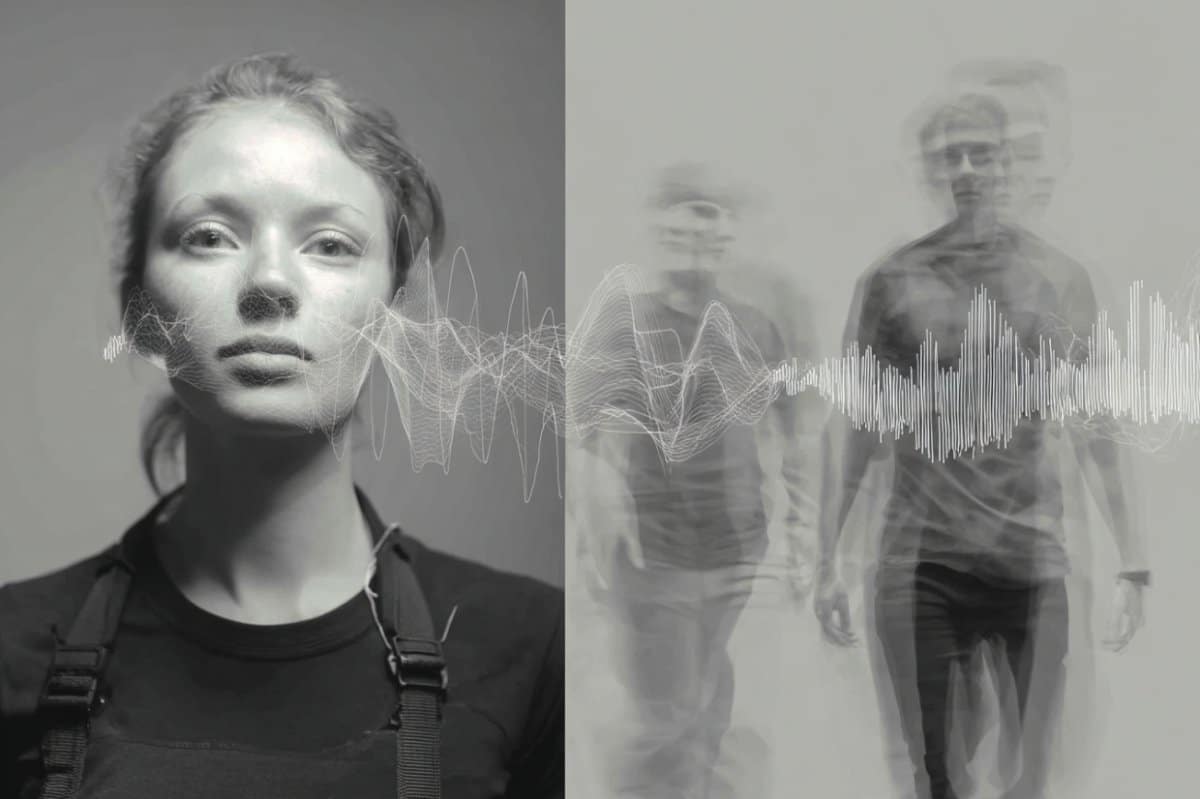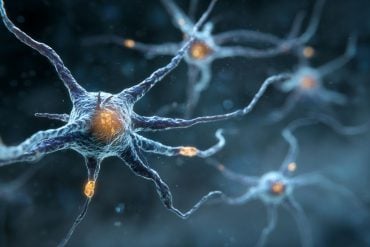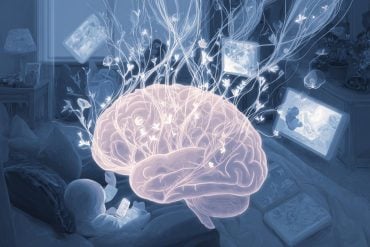Summary: New research highlights the critical role of dynamic motion in recognizing familiar people, beyond static facial or body features. Faces, voices, and body movements each carry unique, idiosyncratic motion patterns — or “dynamic fingerprints” — that help perceivers identify individuals, even under challenging conditions.
These motion cues are learned over time and appear to be integrated across sensory modalities in the brain. However, much remains to be understood about how stable, distinctive, and universally useful these patterns truly are.
Key Facts
- Dynamic Fingerprints: Faces, voices, and bodies exhibit unique motion patterns that serve as identity signatures, aiding recognition.
- Neural Integration: Brain regions like the pSTS appear to integrate dynamic cues from multiple sources to support person recognition.
- Individual Differences: Sensitivity to dynamic motion cues varies widely between individuals, suggesting separate abilities from static recognition.
Source: Neuroscience News
When you spot a familiar face in a crowd, you’re likely relying on more than just static features like the shape of their nose or the color of their eyes. The way they tilt their head, flash a smile, or even walk toward you can reveal just as much — if not more — about who they are.
New research is shedding light on how dynamic motion — from subtle facial gestures to full-body movements and voice patterns — creates what some scientists are calling a “dynamic fingerprint”: a unique, motion-based identity signature we use to recognize those we know.

This mini-review of cutting-edge studies explores the pivotal role of motion in person recognition, examining how we integrate dynamic cues across faces, voices, and bodies to identify familiar individuals.
From idiosyncratic smiles to distinctive gaits, dynamic characteristics provide powerful, identity-specific signals. But just how stable and distinctive are these motion patterns? How does the brain process them? And why do some people seem better than others at using these cues to identify others?
More Than a Still Image: Why Motion Matters
For decades, face perception research focused on static features — snapshots of the eyes, nose, and mouth — as the foundation for recognition. But scientists now know that the way a face moves also provides crucial information.
Movements can reveal 3D structural details of the face, making it easier to learn and recognize. Beyond that, individuals develop their own idiosyncratic patterns of motion, like a unique smile or habitual eyebrow raise, which we come to associate with their identity.
This advantage extends beyond faces. Gait — the way a person walks — is another deeply individual and surprisingly stable signature. Studies show that even stripped-down point-light displays of walking patterns can reveal who someone is.
Similarly, people use hand gestures, posture, and head movements as additional dynamic cues. Collectively, these idiosyncrasies form the basis of what researchers refer to as dynamic identity signatures.
These dynamic cues can be particularly helpful in difficult situations — such as when lighting is poor, or a person’s static features are partially obscured. They also appear to help when static recognition abilities are impaired, as seen in individuals with face-blindness (prosopagnosia), who still benefit from motion cues.
A Symphony of Signals: Faces, Voices, and Bodies
The way we move is often mirrored in the way we sound. Research shows that a person’s dynamic facial movements and voice patterns can correlate, helping perceivers match an unfamiliar voice to the correct face above chance levels. For example, the rhythm of speech, lip movements, and vocal cadence are subtly linked, creating cross-modal cues that further strengthen identification.
Similarly, the body’s motion provides rich information. Gait is perhaps the best-studied of these, with research confirming that people can reliably identify themselves, friends, and even strangers simply by observing walking patterns.
More expressive movements, like dancing or boxing, enhance recognition even further. Other movements — such as idiosyncratic gestures and postural habits — also contribute to what makes someone recognizable in motion.
All of this suggests that identity is not encoded in just one set of features but distributed across multiple, dynamic systems that work together. This raises the tantalizing possibility of a truly holistic dynamic fingerprint — an integrated, unique set of motion cues spanning face, voice, and body.
Are Motion Patterns Always Distinctive?
A key question is whether characteristic motion patterns must be distinctive or merely familiar. Some people naturally move in unusual, easily recognizable ways, while others move in ways closer to the average.
Researchers are beginning to investigate how these individual differences in movement distinctiveness influence recognition. Early findings suggest that more distinctive movements improve recognition, but exaggeration can also enhance learning, at least in body movements like arm gestures.
Future research will need to determine how stable these dynamic fingerprints are over time and across contexts. For instance, tiredness, mood, or intentional exaggeration may alter someone’s typical movements, potentially hindering recognition.
Understanding which aspects of motion remain stable — and which fluctuate — is critical to defining what constitutes a reliable dynamic identity signature.
How the Brain Reads Motion
At the neural level, the brain seems to process dynamic and static identity cues in complementary ways. Regions like the fusiform face area (FFA) and extrastriate body area (EBA) are traditionally associated with processing invariant features of identity, while the posterior superior temporal sulcus (pSTS) is particularly sensitive to motion cues. The pSTS is activated by biological motion, human voices, and dynamic facial expressions, making it a likely hub for integrating motion-based identity information.
Other areas — such as the ventral premotor cortex and frontal regions — may also contribute to representing and integrating dynamic fingerprints. But much remains unknown about how these different brain regions coordinate to produce a coherent, motion-based perception of identity.
Why Some People Are Better at Using Motion
Just as some people are naturally better at recognizing static faces, individuals vary in their ability to use motion cues. People with face-blindness benefit disproportionately from motion, while super-recognizers — those with exceptional face memory — also seem to leverage motion effectively.
Interestingly, the ability to recognize static faces does not always predict sensitivity to dynamic identity signatures, suggesting that separate skills or perceptual strategies are at play.
These individual differences may have important real-world implications. In security or law enforcement settings, where identifying people from grainy or low-quality video footage is common, selecting individuals who excel at recognizing dynamic fingerprints could improve outcomes.
Open Questions and Future Directions
The study of dynamic fingerprints is still in its early stages, and many questions remain. Are dynamic cues integrated differently for faces, voices, and bodies? How does the brain maintain a stable representation of dynamic identity signatures despite natural variability? And how do cultural, emotional, and situational factors influence how we move — and how others perceive our motion?
Researchers are also beginning to explore whether exaggerating or caricaturing motion cues can enhance recognition, particularly for unfamiliar individuals. Advances in motion capture and machine learning are expected to play a big role in quantifying and comparing dynamic fingerprints across individuals and contexts.
Conclusion
The way we move is as much a part of who we are as the way we look. From characteristic facial expressions to distinctive gaits, dynamic cues provide rich, idiosyncratic information that helps us recognize familiar people — even when static cues are degraded or ambiguous.
These dynamic fingerprints appear to be learned over time and may span across face, voice, and body, offering a holistic, motion-based identity signature.
While much work remains to understand the stability, distinctiveness, and neural underpinnings of these cues, the growing body of research underscores a fundamental truth: identity is not static, but in motion.
About this motor neuroscience research news
Author: Neuroscience News Communications
Source: Neuroscience News
Contact: Neuroscience News Communications – Neuroscience News
Image: The image is credited to Neuroscience News
Source: Open access.
“Something in the way they move: characteristics of identity present in faces, voices, body movements, and actions” by Karen Lander et al. Frontiers in Psychology
Abstract
Something in the way they move: characteristics of identity present in faces, voices, body movements, and actions
The recognition of familiar individuals relies not only on static features of the person but also on dynamic characteristics unique to each person’s movements.
This mini review synthesizes current research on the role of motion in identity recognition, examining how characteristic dynamic cues from the face, voice, and body may contribute to perceivers’ ability to recognize familiar individuals.
We highlight corresponding dynamic covariances that may be present across different aspects of an individual’s motion, such as those linking facial and vocal motion.
We evaluate the extent to which dynamic patterns might form a coherent ‘dynamic fingerprint.’
Finally, we consider how variability, distinctiveness, and perceiver-related factors (e.g., individual differences and neural mechanisms) shape the recognition of identity through motion.
We outline open questions and propose new directions for understanding the integration of dynamic information in person perception.






